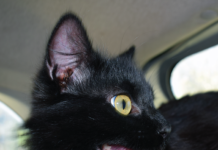Septic peritonitis, an inflammation of the abdominal lining caused by bacteria, isn’t common, but it’s serious. It can be caused by the rupture of an organ such as the intestines or uterus or by a penetrating wound. Spontaneous cases can occur, but are rare. Most cases of septic peritonitis require surgical intervention followed by intensive medical care.
A recent study reported in the Journal of Veterinary Emergency and Critical Care looked retrospectively at cats with septic peritonitis at four referral hospitals to try to determine prognostic factors. While 135 cats were initially included in the study, only 83 made it through the final evaluation.
While survivors had surgery within approximately eight hours of presenting to a veterinarian and non-survivors did not go to surgery until 17 hours, time to surgery was not a significant predictive factor for survival.
Of the 83 cats that received antibiotics on admission, 50 received what turned out to be appropriate antibiotics based on the veterinarian’s knowledgeable choice before any culture results (the gold standard for antibiotic choice) were available. This was a significant factor in survival. Cats who received the appropriate antibiotic(s) were 4.4 times more likely to survive. This is a case where experience pays off. A quick evaluation of the fluid from a septic abdomen can give a veterinarian an idea of what type of bacteria might be involved and help to guide antibiotic choice.
Looking at most clinical parameters like body temperature was not helpful, but blood glucose was. Cats with a high blood glucose had a worse prognosis.
This study leaves many questions still to be answered, but its results suggest that checking blood glucose and choosing the “right” antibiotic(s) are important in the management of feline septic peritonitis.




